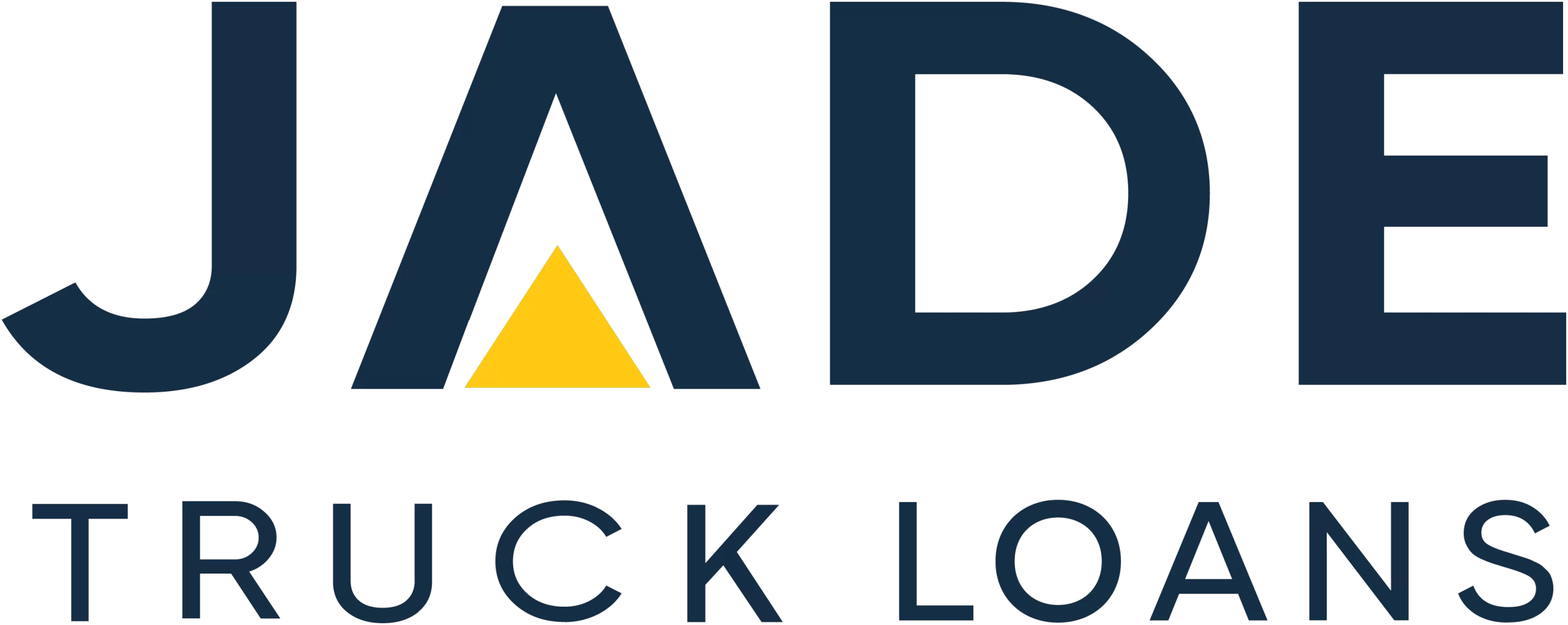The financial services sector is packed with its own terminology which to even experienced business operators can appear confusing. While we can't speak on behalf of the entire sector, we do offer a form of apologies by way of the explainer articles we provide on key terms and issues relevant to business lending. At Jade Truck Loans, we place great importance on our customers being fully informed on all aspects of our truck finance products, the offers we present and the details of the final contract.
In this article we’re addressing the balloons, residuals and buybacks – their purpose, importance, differences and similarities and how Jade can assist you make this element of your loan work towards your financial objectives.
Similarities and Differences
Jade Truck Loans offers the full range of commercial finance facilities: Chattel Mortgage truck loan, Truck Leasing, Commercial Hire Purchase and Rent to Own or Rent to Buy. Each loan type has similarities and differences which offer benefits according to a business set up, accounting method used, approach to taxation and balance sheet strategy.
The key difference between the terms balloon, residual and buyback are that they relate to different loan products.
- Balloon is an element of a Chattel Mortgage and CHP loan. This will be a set percentage of the purchase price.
- Residual is an element of a Leasing finance contract. Usually a set percentage and established upfront.
- Buyback is an element of a Rent to Own loan product. The amount negotiated between borrower and lender for the borrower to take full ownership of the truck at the end of the loan term.
Differences established, each serves a similar purpose as an important element of the finance contract.
Purpose
The inclusion of a balloon/residual/buyback element in a truck loan contract aims to lower monthly payments by deferring a portion of the purchase price for payment at a later stage, specifically at the end of the loan term. Interest is applied to the balloon/residual/buyback amount.
The balloon/residual/buyback represents a segment of the truck's purchase price that is not factored into the monthly loan payments. Instead, it is set aside for full payment at the conclusion of the loan contract. Typically expressed as a percentage of the total truck price (e.g., 20%, 30%, 40%), the allowable amount for a balloon/residual/buyback might be subject to lender guidelines. Our Jade consultant works on your behalf to negotiate with the lender to achieve your desired percentage.
Given that truck purchase prices can be substantial investments, reducing the amount due through repayments by the balloon/residual/buyback percentage can transform an unaffordable purchase into a cost-effective acquisition.
In some ways, this mechanism resembles paying a deposit at the end of the loan term rather than upfront, effectively freeing up or preserving existing cash reserves.
Working the Balloon/Residual/Buyback
Making the balloon work for you is crucial for achieving your financial objectives and ensuring your cash flow remains unhindered. Borrowers must zero in on the ideal balloon percentage that allows for feasible monthly repayments, while also being 'realistic' when the loan term concludes.
By ‘realistic’, consider the potential value of the truck at the end of the loan term. It might be tempting to select the largest possible balloon amount to diminish your monthly expenses. However, you must ponder: will the amount due at the end of the term truly reflect the truck's realistic value or worth?
Should the balloon amount surpass the truck's value by the end of the term, you might encounter challenges. This is where Refinancing Truck Finance Balloon or Residual can come into play. Refinancing can be a strategic move, especially if the balloon payment turns out to be more than the truck's worth. Additionally, insurance considerations might arise in such situations. While your Jade consultant is here to guide you through loan structuring and lender negotiations, decisions that deeply affect your business's financial trajectory should involve discussions with your accountant.
Leverage our Truck Finance Calculator to intuitively grasp how tweaking the balloon/residual/buyback influences repayment amounts. Although the calculator primarily serves as a repayment guide, it's immensely helpful in visualizing how repayment dynamics shift as you adjust the balloon percentage.
The Pay Out
At some time you have to start planning how you will pay out the balloon/residual/buyback to take full ownership of the vehicle. With Rent to Own agreements, the borrower enters negotiations with the lender around buying out the truck finance or relinquishing any claim to the vehicle.
To finalise these amounts, businesses have the options of paying it from existing cash reserves or seeking a new loan agreement to ‘refinance’ the residual. This can be done through requesting a quote from Jade Truck Loans. Keeping in mind that as this will be at the end of the loan term, what was possibly a new truck when your first bought it is now a used truck with X number of years of age on it. Used vehicles may attract different loan conditions than loans for brand new vehicles.
Assistance from Jade
Your Jade consultant will work closely with you, and upon request, collaborate with your accountant to tailor your loan to your desired structure concerning loan term, repayments, and the balloon/residual/buyback amount. Our consultants are seasoned finance professionals and are committed to leveraging their expertise to help you secure a loan that brings optimal benefits to your business. For General Enquiries or to further discuss your requirements, feel free to reach out to us.
To discuss a truck loan or refinancing a balloon or residual, contact Jade Truck Loans on 1300 000 003 to discuss finance and source a quote.
DISCLAIMER: READERS ARE ADVISED THAT THIS INFORMATION AS PRESENTED IN THIS ARTICLE IS INTENDED FOR GENERAL INFORMATION PURPOSES AND NOT AS FINANCIAL ADVICE. PEOPLE NEEDING FINANCIAL ADVICE ARE RECOMMENDED TO CONSULT WITH A FINANCIAL ADVISOR TO ASSIST IN REGARD TO THEIR INDIVIDUAL CIRCUMSTANCES. INFORMATION AND CONTENT IN THIS ARTICLE MAY HAVE BEEN SOURCED FROM A RANGE OF PUBLICATIONS AND INFORMATION RESOURCES. NO LIABILITY IS ACCEPTED FOR ANY ERRORS, MISINTERPRETATION OF OTHER ISSUES AROUND THE PRESENTATION.


